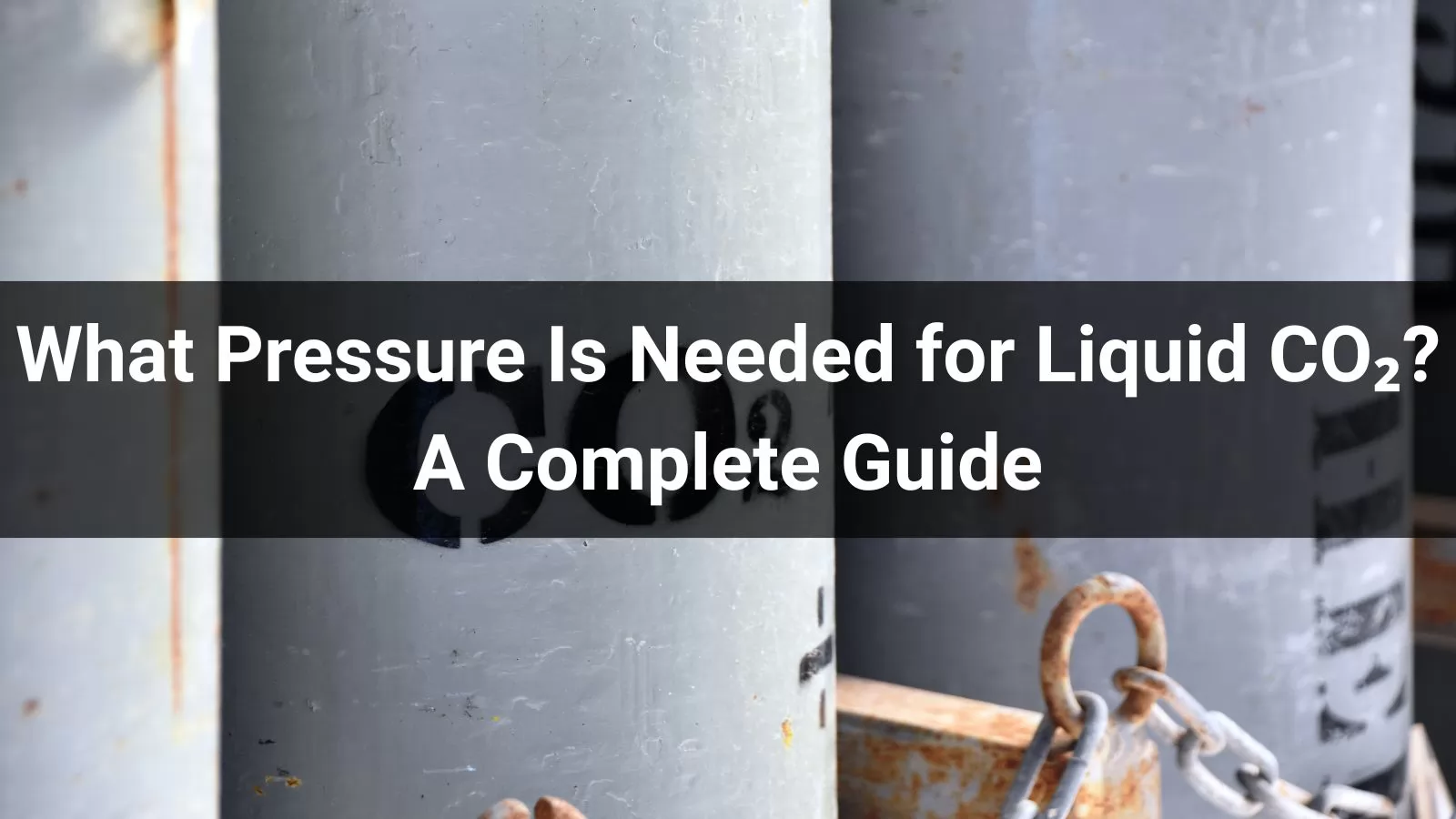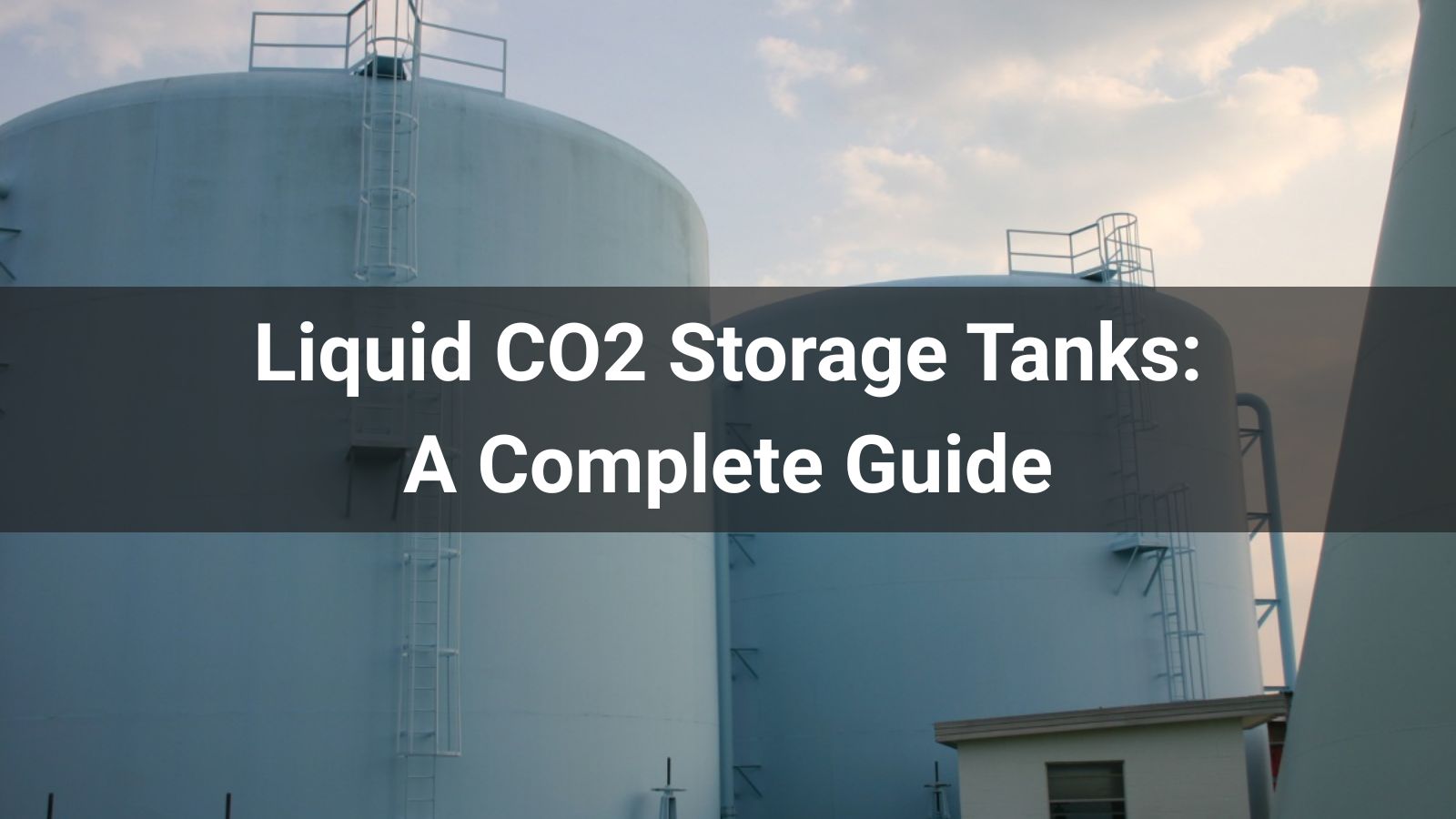
Carbon dioxide (CO₂) is a versatile gas that transforms into a liquid under specific conditions of pressure and temperature. From food and beverage carbonation to industrial refrigeration and fire suppression systems, liquid CO₂ plays an essential role. But keeping CO₂ in its liquid form is not as simple as it sounds—it requires controlled pressure, accurate temperature regulation, and reliable containment systems. In this guide, we dive deep into the physics, industry requirements, and equipment used to maintain liquid CO₂, with real-world insight into how Cryo-Tech helps businesses handle CO₂ safely and efficiently.
CO₂: Understanding Its Physical Behavior
At standard atmospheric pressure (1 atm), CO₂ does not exist as a liquid. It sublimates directly from solid (dry ice) to gas at −78.5°C. To form and maintain CO₂ in a liquid state, it must be both pressurized and cooled to remain below its critical temperature and above its triple point pressure.
- Triple Point: −56.6°C at 5.2 bar
- Critical Point: 31.1°C at 73.8 bar
- Common liquid storage temperature: −20°C to 20°C
These conditions define the boundaries where CO₂ can be condensed and stored in liquid form before it becomes either solid or transitions into a supercritical fluid.
What Pressure Is Needed to Keep CO₂ Liquid?
The pressure required to maintain liquid CO₂ is highly dependent on temperature. The warmer the environment, the higher the pressure needed to prevent vaporization. Below is a detailed chart indicating the necessary pressures at various temperatures.
| Temperature (°C) | Required Pressure (bar) | State of CO₂ |
|---|---|---|
| −20 | 12.5 | Liquid |
| 0 | 34.9 | Liquid |
| 10 | 45.6 | Liquid |
| 20 | 57.3 | Liquid |
| 30 | 70.9 | Liquid |
| 31.1 (Critical) | 73.8 | Supercritical |
For industrial purposes, most liquid CO₂ tanks are designed to maintain internal pressures between 16 to 24 bar with sufficient safety margins and relief valves.
The Temperature–Pressure Relationship: Why It Matters
Because CO₂ is sensitive to ambient temperature, its pressure will vary significantly during the day, especially in outdoor storage environments. This relationship is governed by the vapor pressure curve of CO₂, which must be taken into account in system design.
For example:
- In colder climates, insulation helps prevent solidification.
- In warmer regions, pressure-relief and refrigeration systems are needed to avoid reaching the critical point.
Engineers often incorporate temperature-compensated regulators or automatic venting to manage this dynamic relationship safely.
What Happens Beyond the Critical Point?
Once CO₂ exceeds its critical point (31.1°C and 73.8 bar), it enters a supercritical phase. This state is neither gas nor liquid and possesses unique properties—ideal for uses like:
- Supercritical fluid extraction (e.g., caffeine from coffee, cannabinoids from hemp)
- Sterilization of sensitive materials
However, supercritical CO₂ is not suitable for standard liquid CO₂ storage. This is why cryogenic tanks must be insulated and pressure-stabilized to avoid unintentional phase transitions.
Industry Standards for Liquid CO₂ Storage
Safe and efficient storage of liquid CO₂ requires more than just pressure—it involves strict engineering controls, certifications, and monitoring systems. Key standards include:
- Design Pressure: Minimum 22 bar, with relief valves typically set at ~25 bar
- Material: Austenitic stainless steel for corrosion resistance and pressure strength
- Insulation: Multilayer vacuum insulation to reduce boil-off rate
- Certifications: ISO 11120, ASME Section VIII, GOST, PED
Without appropriate design, pressure fluctuations can lead to CO₂ venting losses, equipment fatigue, or safety risks—making professionally engineered systems critical.
How Cryo-Tech Ensures CO₂ Safety & Efficiency
As a leading provider of cryogenic solutions, Cryo-Tech specializes in advanced CO₂ storage and transport systems. Our offerings include:
- Liquid CO₂ Storage Tanks: Fixed and mobile tanks with pressures up to 24 bar
- ISO CO₂ Tank Containers: Certified for international shipping with multilayer vacuum insulation
- CO₂ Semi-Trailers: For large-scale distribution with real-time temperature and pressure control
- Customized Engineering: Tailored solutions for beverage, welding, fire suppression, and dry ice manufacturing sectors
Our systems are designed with fail-safe pressure controls, low-loss insulation, and global compliance—ensuring maximum uptime and minimal product loss.
Explore Our CO₂ Tank Solutions →
FAQ: Common Questions About Liquid CO₂
- Can CO₂ be stored at atmospheric pressure as a liquid?
- No. At 1 atm, CO₂ exists as a gas or solid (dry ice), not as a liquid.
- What happens if the pressure drops below the minimum threshold?
- CO₂ will begin to vaporize, increasing tank pressure and potentially triggering safety relief mechanisms.
- What’s the difference between liquid and supercritical CO₂?
- Liquid CO₂ behaves like a typical fluid, while supercritical CO₂ has hybrid gas-liquid properties and is used in specialized applications.
- Can Cryo-Tech tanks be used for other cryogenic gases?
- Yes. Cryo-Tech provides custom tanks for LN₂, LOX, LNG, and other gases under varying pressure and temperature requirements.








.png)




.png)

![Top 10 Cryogenic Companies in USA[2025 Updated]](/statics/images/right.png)
![Top 10 Cryogenic Companies in USA[2025 Updated]](/uploads/202508/bannerlist_1756363009_WNo_800d450.jpg)

![Top 10 LNG Tank Manufacturers Worldwide[2025 Updated]](/uploads/202506/CryoTech-banner-1-_1750490922_WNo_800d450.jpg)



